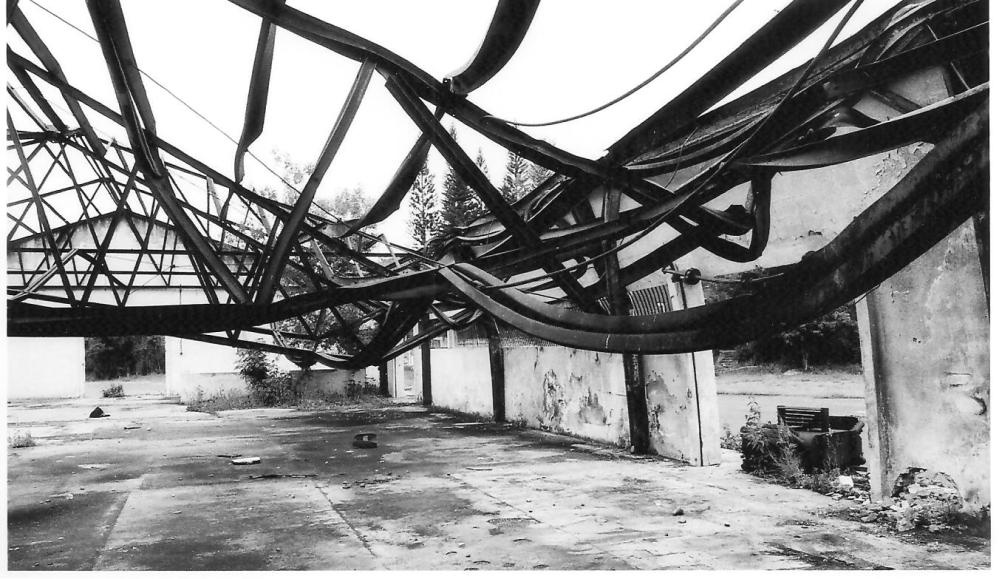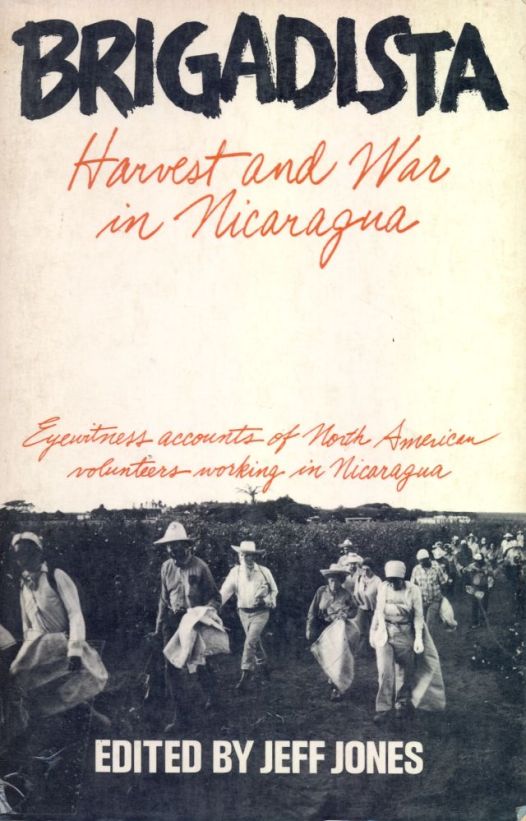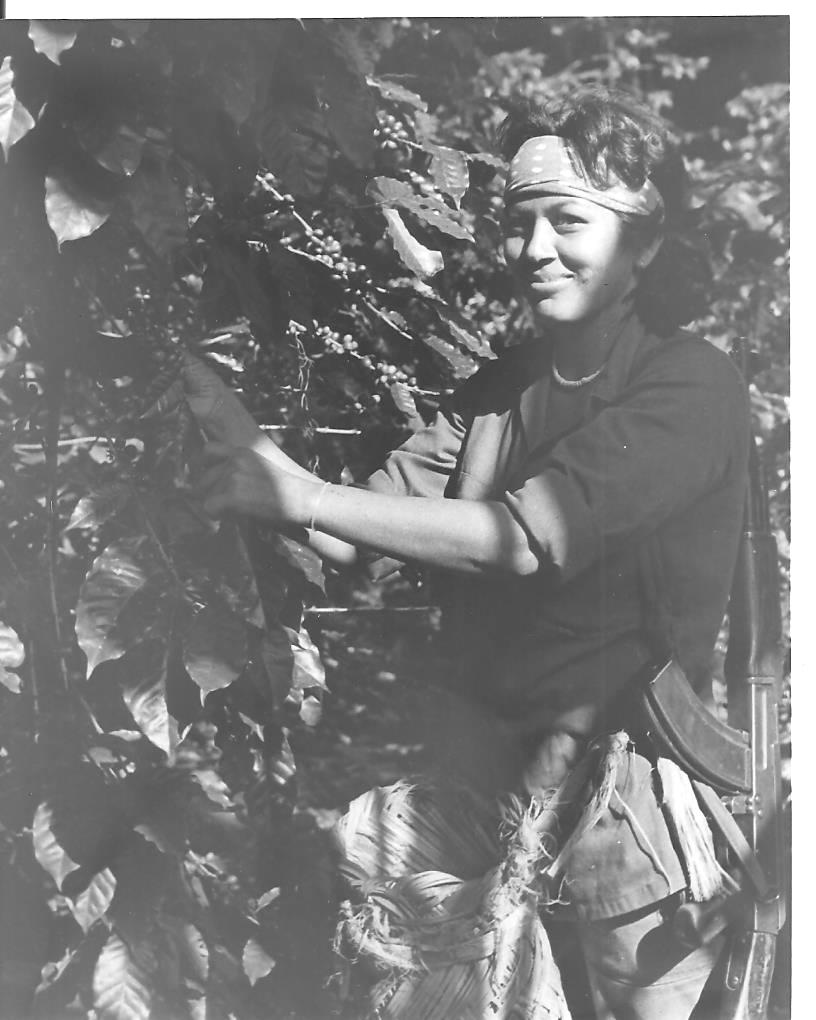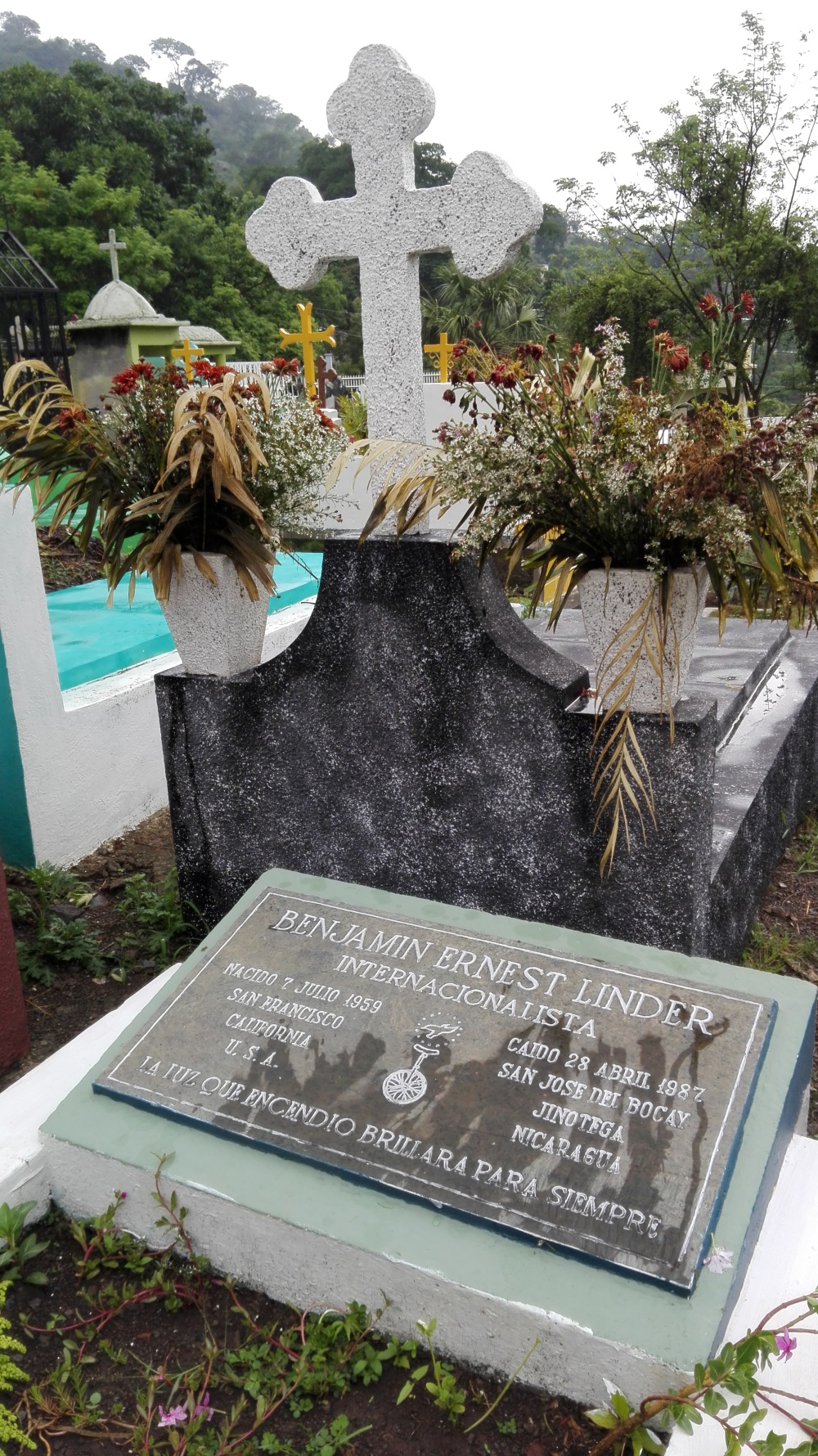
Brigadistas & volunteers – the same but different?
How much is there in common between young volunteers who come to Nicaragua today, and the anti-war work brigades who came here in the 1980’s? I have just read two fascinating accounts of the 1980s coffee brigades, one from the USA and one from the UK.

Warehouse near Somoto, destroyed by U.S.backed ‘contra’rebels, 1984.
Brigadista, Harvest and War in Nicaragua is a moving book written in 1986 by Jeff Jones. Jeff interviewed dozens of American citizens who came to Nicaragua in the early 1980’s, when the Sandinista revolution was young and optimistic, and US president Ronald Reagan was funding the contras to destroy the revolution in its infancy.
While the counter-revolution burnt down health posts and attacked rural farms, brigades of U.S. volunteers came on work brigades to pick cotton or coffee, to accompany the revolution, and then return to their country to lobby against an invasion of the country. Jeff Jones estimates that around 650 U.S. volunteers came to work here in 1984, including some who were veterans of the anti-war struggle, and others newly politicised by the gross injustice of the war against the Sandinistas.

From the UK a shorter but more scholarly work was recently published by David Lewis. Brigadista: An Analysis of British and US volunteers during the contra war in Nicaragua. http://nicaraguasc.org.uk/news/article/182/sandinistas-and-solidarity:-the-contribution-of-1980s-brigadistas
Based at Leeds University, David interviewed British ex-brigadistas. The paper is able to assess the long term impact of those visits on the lives of the volunteers. Most said the experience in Nicaragua had affected their lives hugely, the way they would vote, the way they would shop, their lifelong involvement in community activities and campaigns. Many later supported Anti-Apartheid Movement or other similar struggles, or campaigns in their home towns or the Labour Party.
I can associate strongly with these 2 accounts, since I picked coffee for three months in 1984/85 with an international brigade. When my sister and I returned to the UK in 1985 we helped organise the first British brigades with the Nicaragua Solidarity Campaign (NSC). Over the following decades the NSC organised dozens of brigades, study tours, and trade union exchanges, and to their credit they are still active today.

Armed coffee-pickers guarded the international brigades. 1984
Today many developing countries receive huge numbers of young people looking to volunteer on dozens of different schemes and brigades. Very many of these are short-term, private sector, ‘voluntourism’ schemes, that contribute little, if anything to the host country. Nicaragua also receives dozens of religious missions a year, mainly from US evangelical churches, intent more on evangelizing the poor than in helping them climb out of poverty.
In Nicaragua we also receive about 500 young English volunteers a year from a UK-government funded scheme (International Citizen Service). This is a much more formal scheme than the private volunteerism projects. Conditions are quite tough, some stay for up to ten weeks in rural communities with little electricity or running water. While some of the projects could be better designed, many of the volunteers contribute a lot and go home changed in many ways.
The big difference between the 1980’s and today is that in the 1980’s nearly all the brigadistas had a political analysis. People knew why they were coming to Nicaragua specifically, because they admired the achievements of the Sandinistas, and opposed U.S. intervention. One young American – Benjamin Linder paid with his life, murdered by the contra, and his grave is still well-tended today.

Grave of Benjamin Linder, Matagalpa, 2016
Today I believe that most young people want to volunteer, often anywhere, often as part of gap-year, and don’t mind very much where they go or what they do. Volunteers today are rarely ‘in solidarity’, and some have a very poor knowledge of the country they have come to visit. To be fair, in the 1980s we were very clear that we were in solidarity with the Sandinistas, achieving great strides forward on behalf of the poor. Today few people would see themselves in solidarity with the FSLN.
If we are optimistic, we can hope that the young people who visit Nicaragua and Costa Rica will go back to the UK at least with a greater environmental awareness, and hopefully with a desire to support the UK’s commendable programme of international aid. But it is difficult to see the current wave of volunteers around the world going back home with a heightened political consciousness. Is there more that could be done in the countries that send volunteers, to move these young people into lifelong activists for social justice?